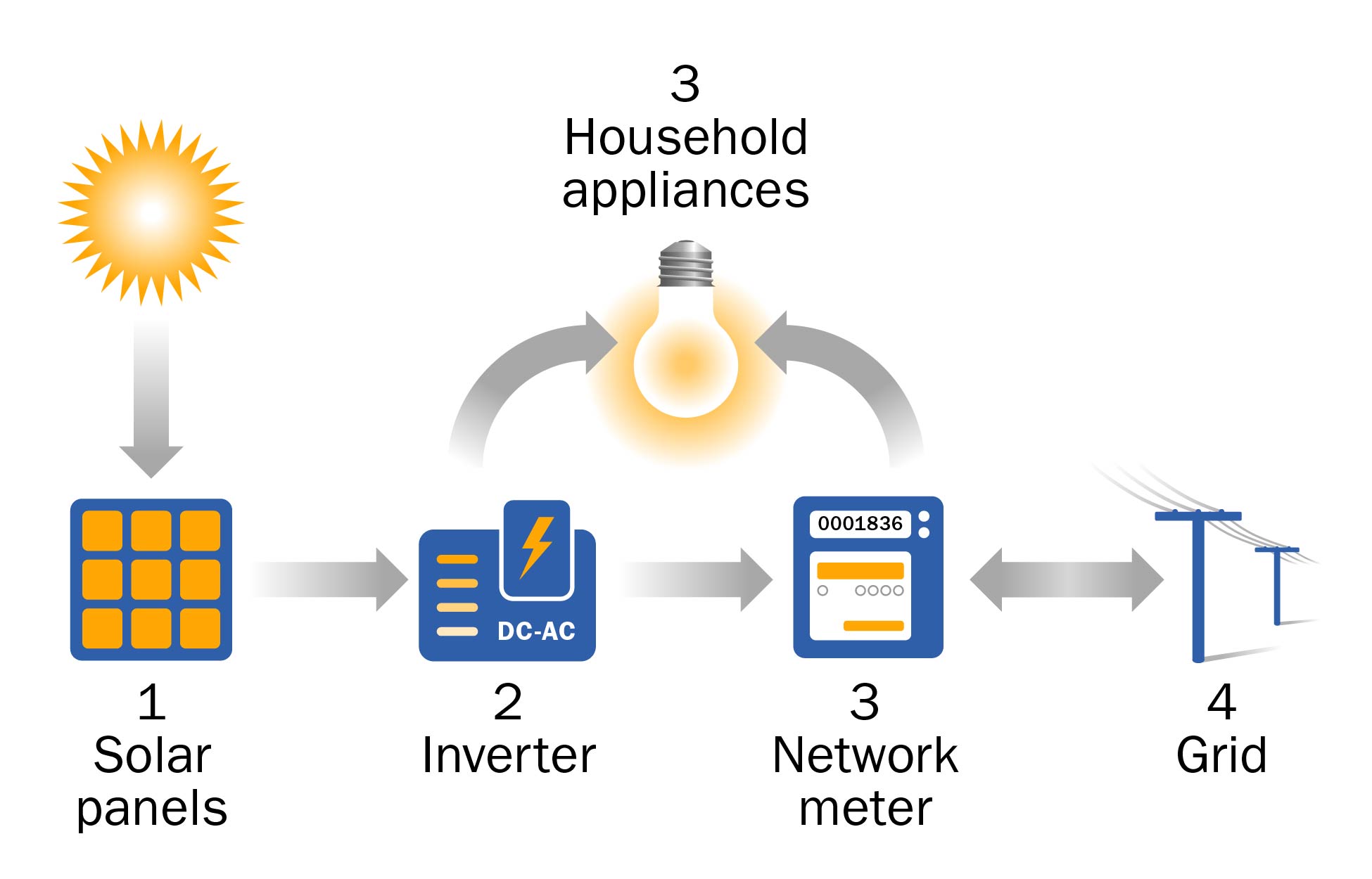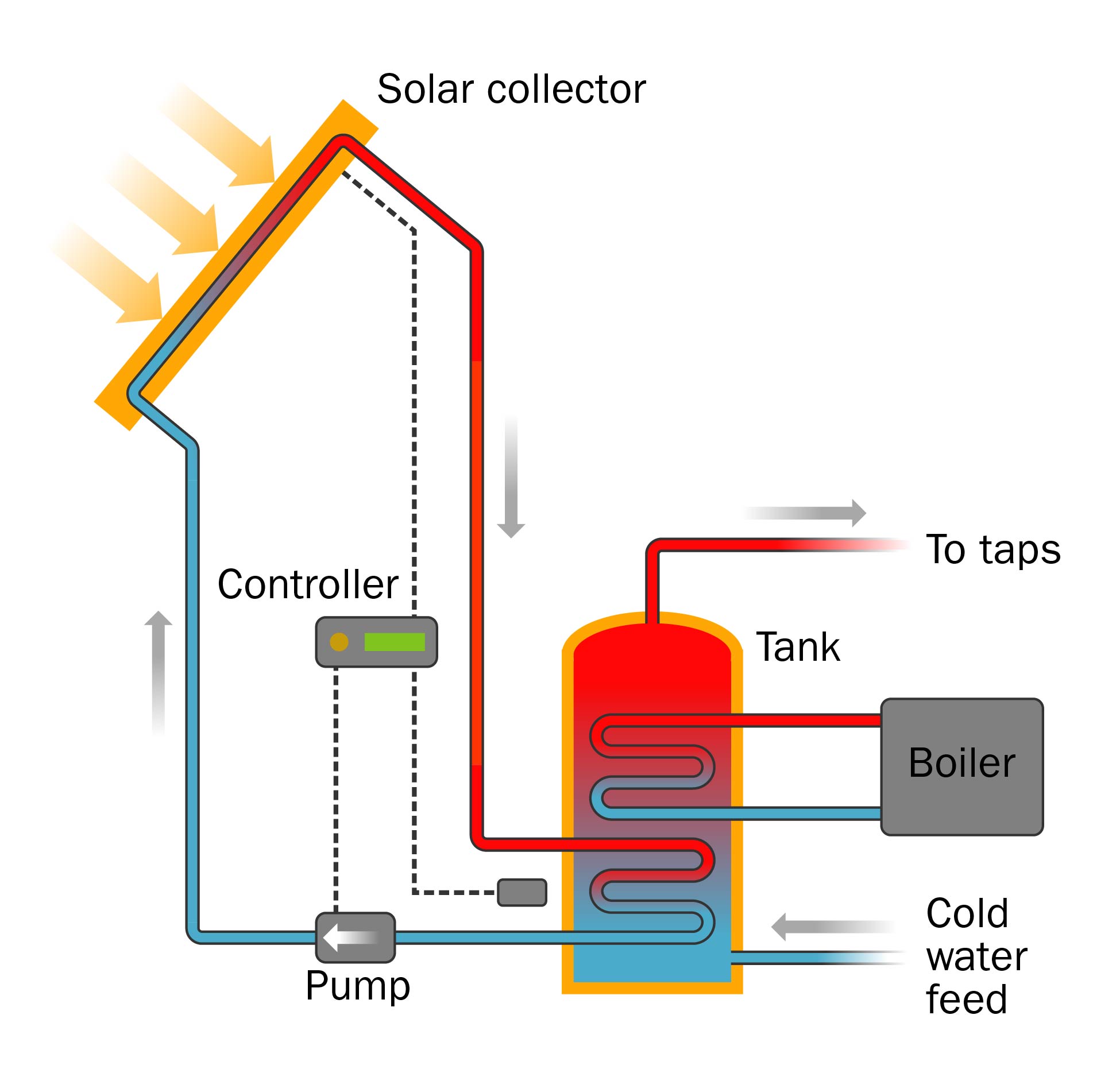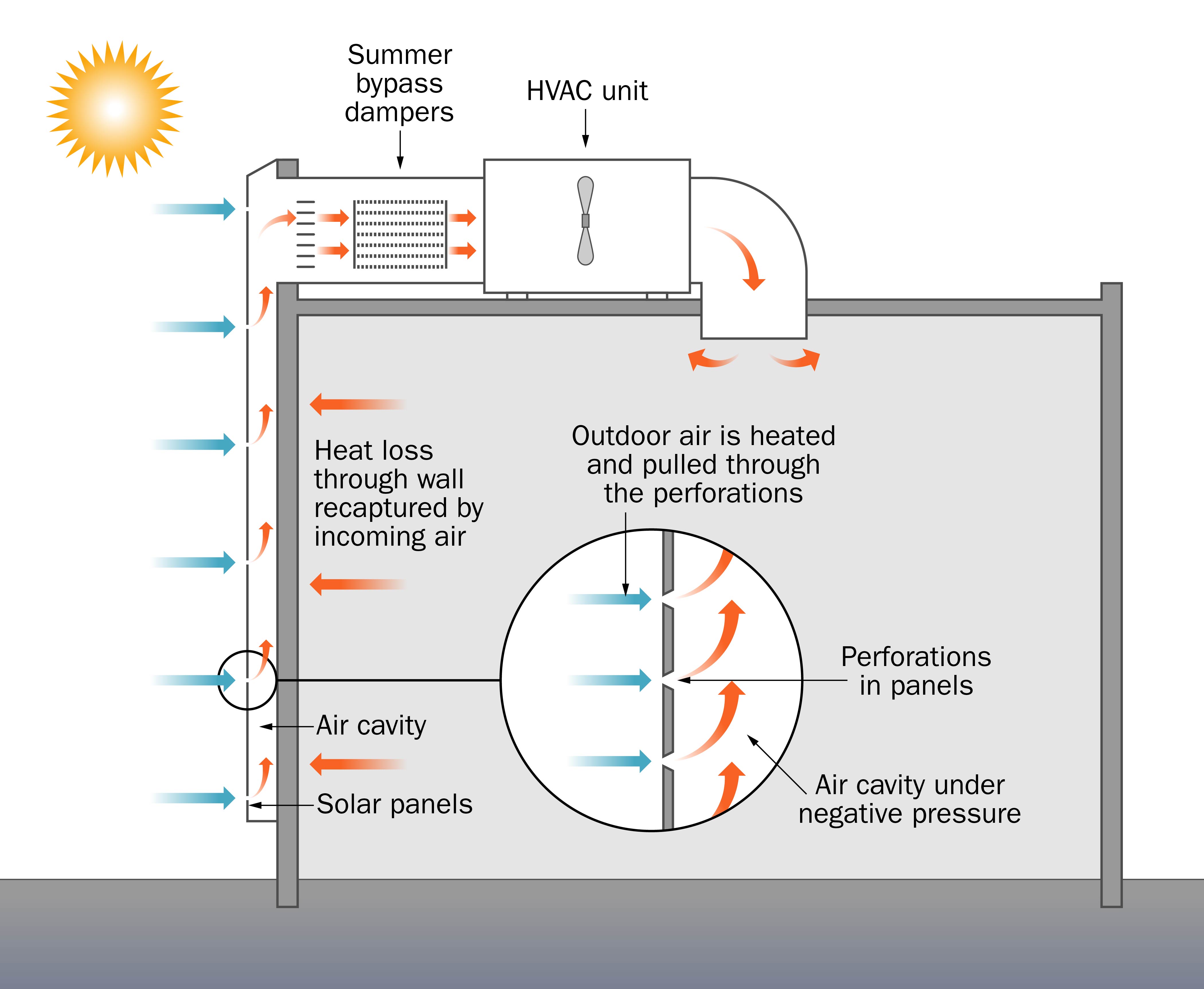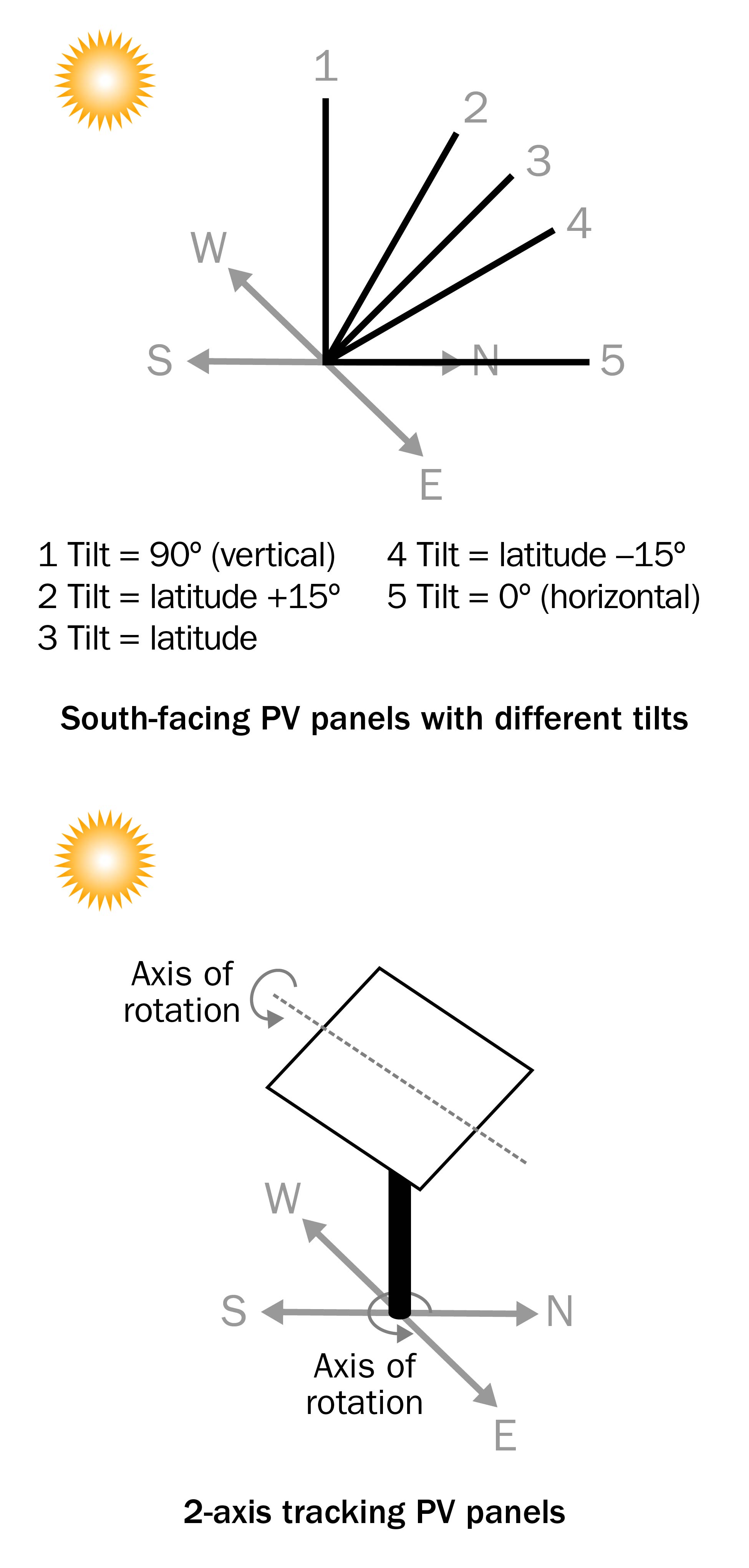Solar energy on farms
Learn how solar energy collection works, current technologies and ways to integrate solar energy into an agricultural operation. This technical information is for Ontario farmers.
ISSN 1198-712X, Published April 2024
Introduction
Solar energy is radiant light and heat from the sun that can be harnessed using a variety of techniques. Solar energy provides free, renewable, clean energy and can help defray the rising cost of conventional energy.
This fact sheet provides farmers and rural residents with information on how solar energy collection works, current technologies and ways to integrate solar energy into an agricultural operation.
Solar energy collection techniques
There are several common ways to harness solar energy. “Active solar” techniques directly harness solar energy in a controlled manner, for the purpose of producing electricity or heat. “Passive solar” techniques capture solar energy through exposure to the sun without active mechanical or electrical devices.
Photovoltaic (PV) panels for generating electricity, and solar air and water heating systems, which use pumps and/or fans to circulate heat, are examples of active solar techniques. Positioning buildings to capture more solar energy and/or using building materials that store solar heat are examples of passive solar techniques. The specific technologies used to capture this energy are continually evolving.
Solar electricity
Solar electric systems (also called solar photovoltaic systems or PV systems) are what most people think of when they hear the words “solar energy.” The basic components of a PV system (Figure 1) include:
- PV panels that are comprised of cells made of semiconductors such as silicon. These cells generate an electric field by absorbing sunlight, resulting in direct current (DC) electricity. PV panels have no moving parts and require little maintenance.
- An inverter that converts the DC electricity from the PV modules into the alternating current (AC) electricity that is used in the power grid and is required by most electrical appliances. PV systems may use one centralized inverter connected to multiple panels, or multiple microinverters attached to each panel in the system. Microinverters offer redundancy and reduced power loss compared to centralized inverters.
- A network meter may be used to connect the solar system to the power grid. The meter measures the amount of electricity produced and reports to the electric utility provider. The electricity can also be used directly, without connecting to the grid.

The rooftop of a farm building can be an ideal location for a solar installation, having large areas with few obstructions. However most existing farm structures weren’t designed to carry rooftop solar installations. When considering whether an existing structure is suitable for solar installation, review the Ministry of Agriculture, Food and Agribusiness’ (OMAFA) fact sheet, Rooftop solar installations on rural buildings.
Though a PV system may be uneconomical as a main source of power without substantial subsidy, it can be useful as a source of backup electricity. If connected to the power grid, it can be used to supplement the use of utility electricity, reducing your electric bills. Ontario offers net metering, a process that calculates the utility bill by subtracting the amount of electricity produced through a PV system (or any renewable energy source) from the amount of electricity consumed.
Solar water heating
Solar water heating systems convert energy from sunlight into heat, which is used to raise the temperature of water. This hot water can be used for domestic water (drinking, washing) or for space heating (radiator, in-floor). A typical solar water heating system (Figure 2) consists of:
- a solar collector, mounted on roofs, walls or the ground, to absorb the sun’s energy as heat
- water or antifreeze, in pipes, to gather the heat being absorbed by the collector
- a heat exchanger that extracts the heat that has been gathered
- a pump that circulates water or antifreeze through the collector and the heat exchanger
- a storage tank for the heated water
- a secondary heat source, such as a boiler, to provide additional heat in cases where the solar energy alone cannot meet the full heat demand

Solar water heating systems have a high efficiency in the summer, converting up to 80% of the solar energy that contacts the system into heat. In the winter, only 20–25% of the solar energy is converted. Smaller systems are suited to providing hot water for residential consumption by preheating water before it enters the normal hot water tank. Larger, more extensive solar water heating systems can heat large volumes of water for agricultural applications, such as milk production.
A solar hot water system offers a clean, renewable, and efficient way to cut down on the overall cost of water heating, however it may not be cost effective to fully provide for all hot water needs using solar in a residential or agricultural application. A solar hot water system can be connected to an existing hot water tank (Figure 2) allowing the solar heat to supplement the existing heat source. Heating water accounts for a quarter of energy usage in a normal residential home; using solar heat can substantially reduce the related energy bill. A solar hot water system only requires electricity for pumping water into the collector. After installation, the solar water heating system will require only routine maintenance.
Solar air heating
Solar air heating systems absorb thermal energy from direct sunlight to heat fresh air. This is similar to solar water heating, except the working fluid is air. This heated air is then circulated through buildings to provide space heating.
Solar air heating systems can be active (using fans to draw in air through the solar collector) or passive (using natural convection). Other passive techniques, such as orienting buildings toward the sun, or selecting materials with favourable thermal mass or light-dispersing properties, are also used to harness and/or deflect solar energy. In barns and other buildings where ventilation is important, an active solar heating system that uses perforated metal cladding can guarantee an inflow of heated fresh air (Figure 3), improving indoor air quality. It is easily incorporated into plans for a new building or retrofitted onto an older building, replacing the normal cladding.
Livestock barns are well suited to have active or passive solar thermal collectors installed on south-facing walls to pre-heat incoming ventilation air.
Greenhouses rely on passive solar energy to provide heat and light for plants. Most greenhouses also have additional heating systems to make up for any shortfall in heat during nighttime, cloudy days and in colder months.

Typical components of a solar air heating system include:
- a solar collector, which may be a perforated, unglazed panel or a solid glazed panel with hollow tubes behind, and is often installed on vertical, south-facing walls of buildings
- ductwork connected to the collector to direct heated air into the building
- fans to draw fresh air in and/or exhaust stale air (for active systems) or passive air vents to allow natural air movement
Solar air heating systems are used primarily in winter. As a result, most solar air heating installations use vertical panels. Since the sun is lower in the sky in winter, vertical panels receive more direct sunlight in winter than in the summer. This minimizes the temperature increase in the summer, while maximizing heat capture in winter. Active systems may also have a summer bypass installed that cuts off the flow of heated air when not required.
Apart from the upfront costs, solar air heating requires only routine maintenance — the energy it generates is free.
Determining solar energy potential
Before installing any type of solar energy system, understand the solar resource in the local area, which is the measure of the sunlight that falls upon a specific area. Figure 4 shows a solar resource map of Ontario, showing the annual potential energy in kilowatt-hours produced per kilowatt of solar panel installed, tilted at an angle equal to the latitude of the site.

According to data from Natural Resources Canada, the average solar system in Ontario can produce 1,166 kilowatt-hours of electricity per kilowatt of solar panels per year. Natural Resources Canada has an online mapping tool that identifies the specific solar resource for a certain area or municipality by month and by various “tilt” angles of solar panels or collectors.
Maximizing solar energy capture
Whether mounted on the ground, an outside wall or a roof, a solar collector for electricity or heat capture should face south, so that it is exposed to as much direct sunlight as possible during peak sun hours, from 10 a.m. to 3 p.m.
Typically, a solar panel will capture the most energy if it is tilted at approximately the same angle as the latitude of the location. Ontario’s latitude falls between 42° north and 56° north. For most locations in southern Ontario, a panel angle of approximately 45° will maximize solar capture throughout the year. If the system is primarily used in winter (for example, solar air heating), a panel angle closer to vertical may be more appropriate.
Solar PV systems can also use two-axis tracking, which allows the panel to automatically adjust its angle of tilt and its direction to continually face the sun. This maximizes solar capture but introduces moving parts and control systems that require maintenance and upkeep. These systems are also more expensive than fixed panels (Figure 5).

Source: Natural Resources Canada.
Solar energy systems, especially PV panels, have decreased significantly in cost in recent years. To estimate the potential payback of solar PV systems:
- Estimate the annual energy production in kilowatt-hours per kilowatt of panel capacity.
- Multiply the expected kWh production by the average energy cost paid in $/kilowatt-hour to get the equivalent value of the generated electricity per year.
- Divide the total installation cost by the equivalent value of generated electricity to find the expected payback in years.
For solar heating systems, estimating payback is a similar process but the thermal output of the panels must be estimated, and the conversion of savings should account for the cost of fuel used to produce the heat. The supplier of the solar thermal panels may be able to provide a savings estimate.
Summary
Solar PV and solar heating systems offer significant opportunity for energy savings. PV systems generate electricity that can supplement grid electricity. Heating systems can pre-heat air or water for use in the building. To heat air with solar energy, consider using an active system (use fans to move warm air from the solar collector into the building) or a passive solar system (use the movement of warm air to transfer heat from the solar collector into the building). The industry now offers the ability to design and build your own system or buy a commercial solar air system.
Author credits
This fact sheet was written by James Dyck, P. Eng., engineering specialist, crop systems and environment, OMAFA, and reviewed by Anna Crolla, Ph.D., P. Eng., engineering specialist, energy and crop systems, OMAFA.